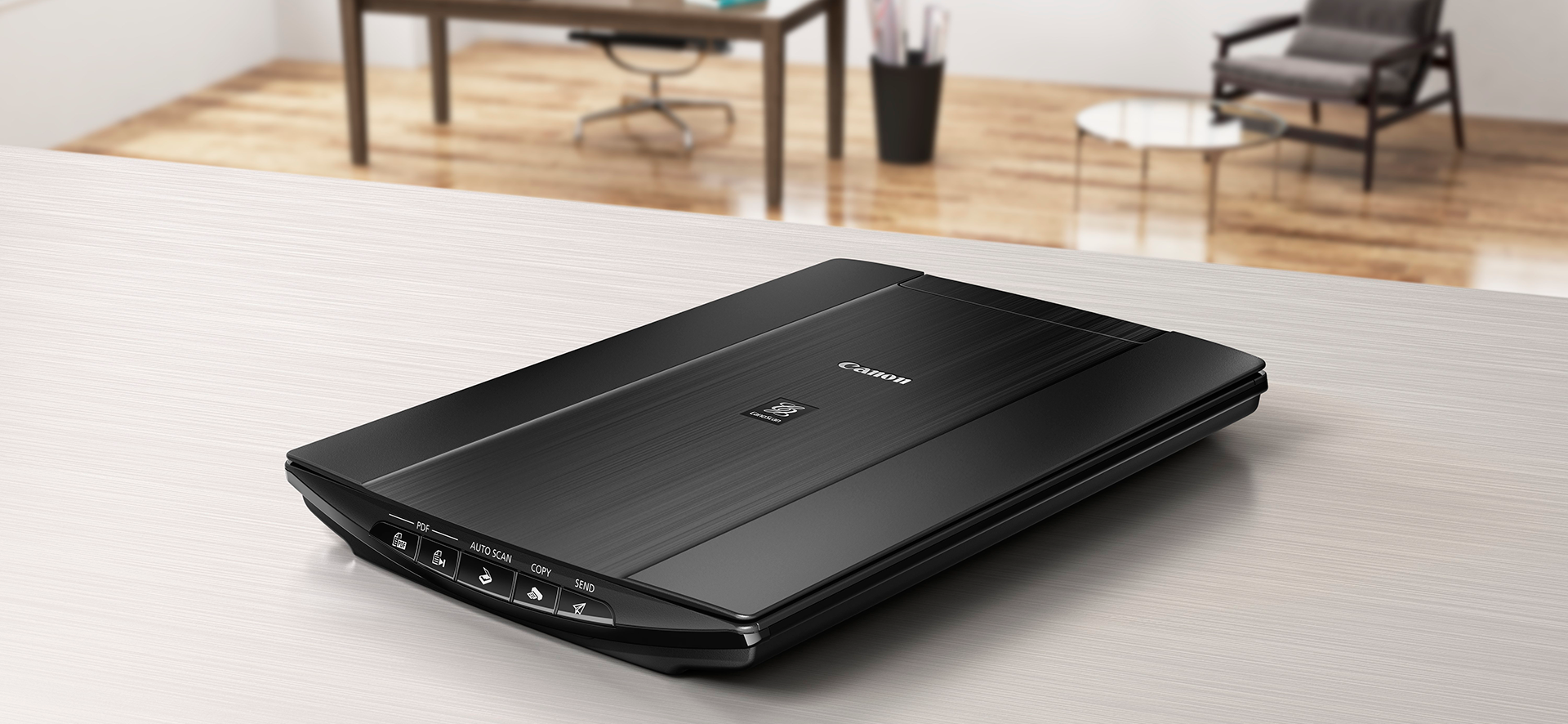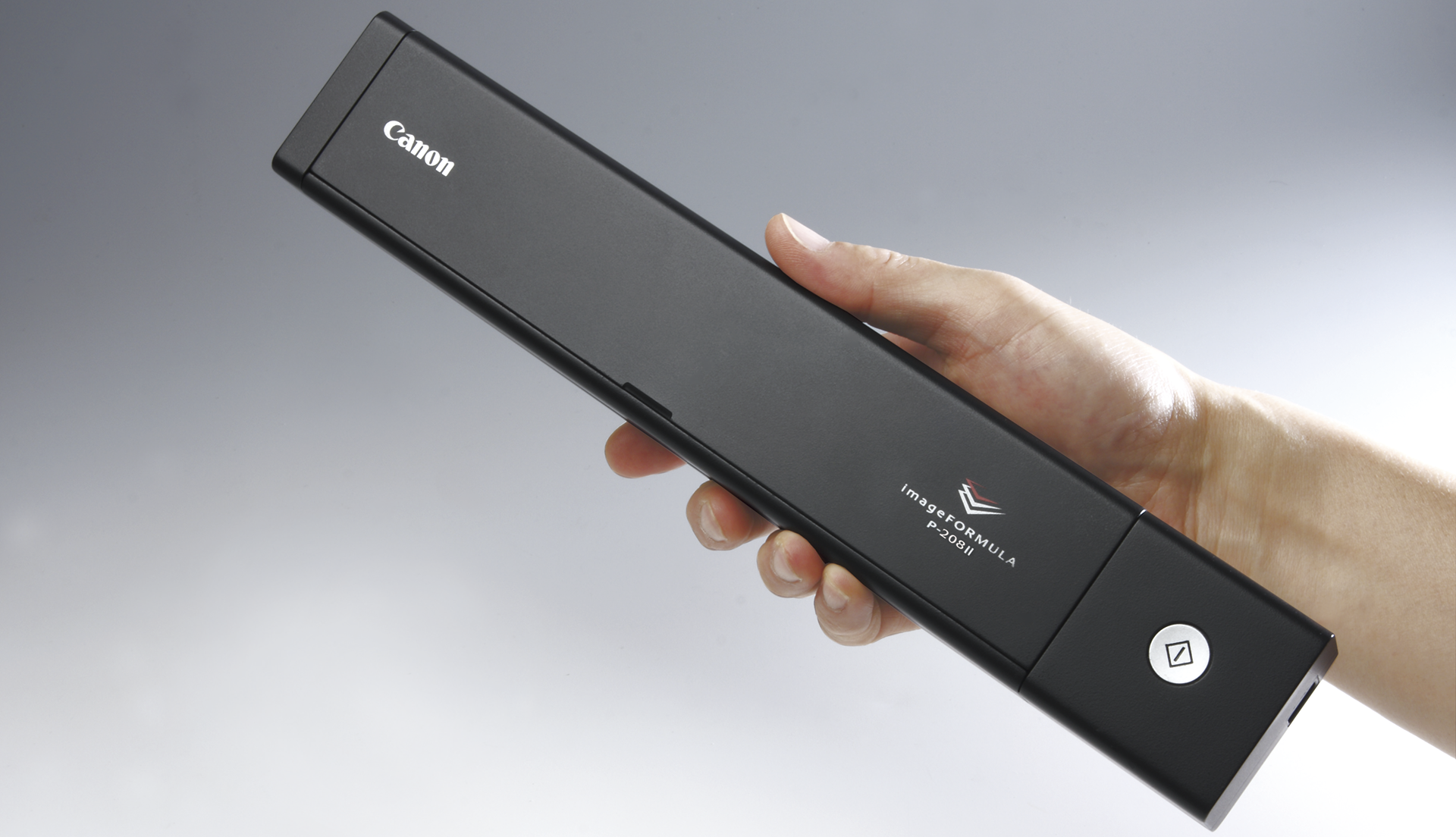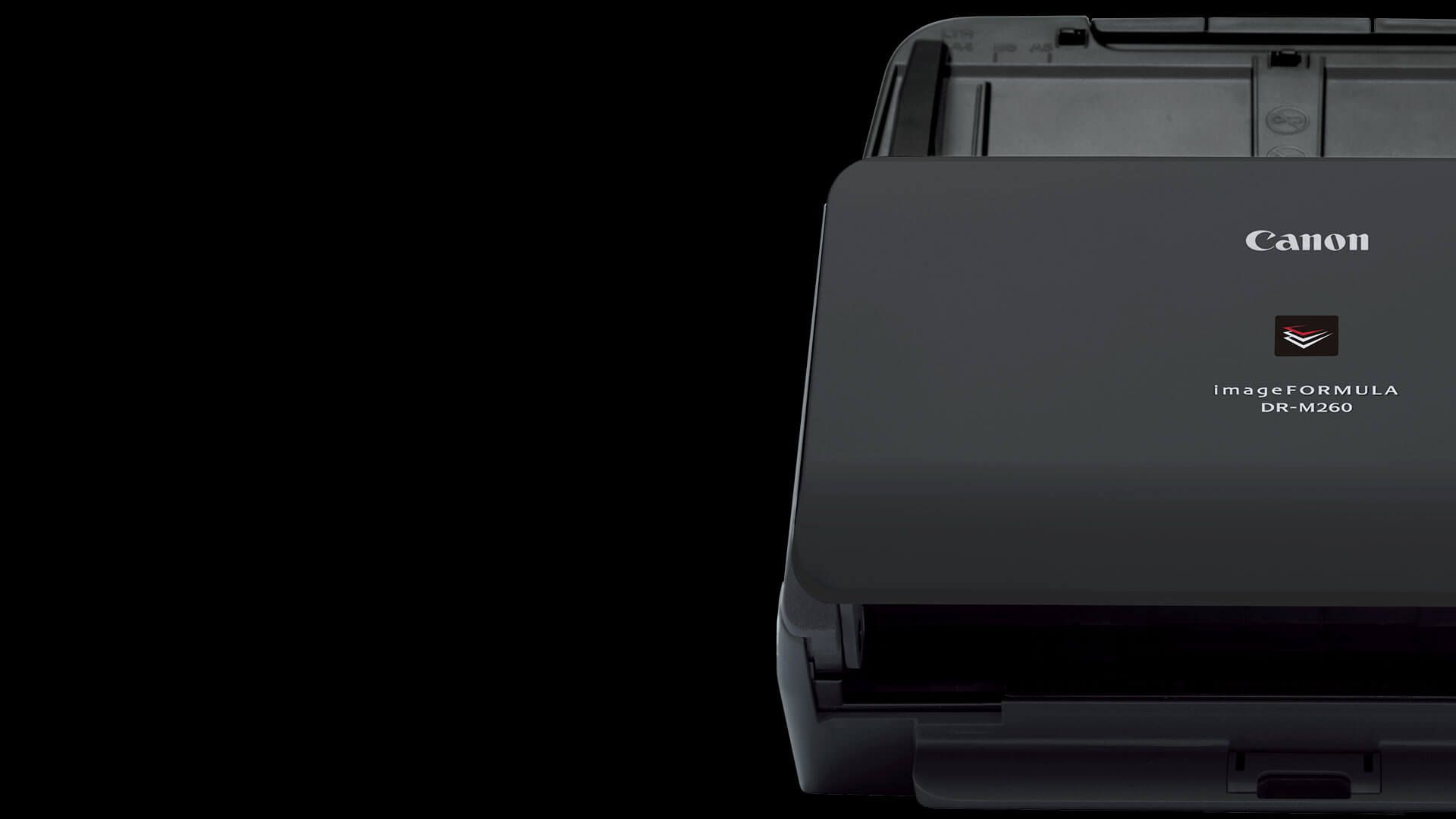Thorough processing. Why are scanners necessary for business in 2017?
It seems that with mass distribution of MFPs - devices that conveniently combine everything you need in one building, often with a very attractive price / performance ratio, the scanners should, if not disappear as a form, then be reduced to a couple of copies in the production line.

But the number of actual scanning devices in the model range of Canon suggests that they not only have not lost their relevance, but also provide the consumer with a choice based on his needs.
Let's try to figure out why and who needs document scanners in our time.
Technology does not stand still, including in the field of development of scanning devices. Over the past few decades, scanner models have become cheaper, more compact, more productive, faster, and most importantly, the quality of the resulting image has improved several times.
However, the basic principles of image fixation and device classification remained almost unchanged. In a nutshell, scanning devices can be divided into categories based on their purpose, type and technology of the photosensitive element of the scanner.
By purpose, scanners are divided into many types, but the most popular models are home, office and industrial scanners, the main differences of which are performance and ability to withstand various loads.
Without taking into account specialized models such as film or handheld scanners, by the type of device can be classified into tablet models, document (drawl) and network.

Tablet scanners are probably the most familiar to you and the most common type of device for household use, in which the document is located on a transparent tablet. They are practically not used in organizations due to the fact that the design eliminates the possibility of working with large volumes of documents. However, flatbed scanners are used as a supplement (as a separate device or as a special accessory) to a document scanner due to the fact that they allow you to scan various documents that are bound.
But the real heroes of the offices are document scanners, since they allow you to automate the process of transferring large amounts of various information from paper media into digital space. The design of such devices is somewhat similar to a traditional printer: automatic sheet feeding, consisting of a system of rollers and guides, pulls the scanned original in front of a fixed image pickup sensor.
One of the varieties of document scanners are network scanners. These devices connect directly to the existing network infrastructure and can work independently without connecting to a computer or mobile device.
As for the technology of the photosensitive element, by this criterion, in most cases, scanning devices can be attributed to one of two types: CCD (Charge Coupled Device) and CIS scanners (Contact Image Sensor).

Without going into details, we can say that the basis of the CCD scanner consists of a white light source, a relatively complex system of mirrors and lenses, and a photosensitive element.
The CIS technology consists of RGB LEDs and a web with identical photosensors equal in width to the working scanning field. Sensors directly perceive the light flux from the original, and the optical system is completely absent.

In actual models of Canon scanners, which at one time was the initiator of the implementation of this technology, high-quality CIS CMOS image sensors are currently used. This not only allows you to achieve the most compact size of the device and use various forms of factors, but also provides high quality scanned images.
The key advantages of scanning devices over the MFP today are much more compact size, specialization and performance in particular, and the ratio of cost to capabilities in general. Taking into account the fact that the need for printing for a working group can often be easily compensated by a single printing device or an MFP, the purchase of several additional scanners will be more expedient from the point of view of the distribution of company resources.
In addition, most universal solutions are simply not able to cope with such large volumes as professional scanners do. The developers of the MFP are trying to balance the cost of the device and the life of all components, while the technical component of the scanners must meet the highest requirements for the scanning process.
Simply put, if the specifics of the work of your department or organization involves transferring large amounts of data from physical media to digital form and / or you encounter specific tasks in terms of document processing, in such a situation, scanning devices can be the solution to your problem, in view their higher efficiency.

For example, if you often work outside the office or go on business trips and strive to reduce additional costs for copying services, you can use the Canon imageFORMULA P ultra-compact portable scanners. They are small in size (for example, the P-208II imageFORMULA model is no more than clerical rulers), scanners provide the user with all the features of a modern scanning device, including automatic sheet feeding and high-speed duplex scanning: 8 or 15 pages per minute, depending on how ate.
For those places that do not assume the presence of large space or a full-fledged workplace with a PC - for example, at the control desk or at points of sale - the network scanners from the imageFORMULA ScanFront line will be the ideal solution.
Thanks to the touch screen, flexible administration and custom software development, as well as compatibility with Canon uniFLOW print servers, imageFORMULA ScanFront scanners help streamline workflow processes without the need to purchase additional PCs.

Desktop models of Canon document scanners please with even higher performance and advanced functionality. For example, the imageFORMULA DR-C240 is capable of processing up to 90 images per minute in duplex scanning mode. The device can scan up to 4000 pages per day and can work not only with ordinary office papers, checks and other materials, but also handle such complex documents as passports and business cards. At the same time, imageFORMULA DR-C240 (as well as other models in the line) ensure smooth, silent operation.
The high performance of Canon desktop scanning systems is provided by the most advanced and powerful components. For example, the imageFORMULA DR-M260 model is notable for the new built-in DR processor, not inferior in performance to the processors used in modern personal computers. Because of this, the new model allows you to scan documents at a speed of 120 images (about 60 pages) per minute.

In addition to high-speed scanning, the processor provides the ability to correct the resulting image in real time. The scanner can perform not only basic actions like automatic change of the mode and color balance or image cropping, but also such “advanced” operations as three-dimensional color correction, alignment of grainy images with semitones, as well as removal of color to get a clearer image.
To facilitate the scanning process (especially when it comes to large batches of documents), models from the imageFORMULA line use various technological and software solutions, as well as support the best image processing standards in the industry: many Canon scanners can independently determine page size and orientation text, have automatic features to improve text, alignment and color definition.
In addition to this, proprietary software solutions help to improve the quality of the received images and automate the process and save time on post-processing and management of the resulting digital documents:

But the number of actual scanning devices in the model range of Canon suggests that they not only have not lost their relevance, but also provide the consumer with a choice based on his needs.
Let's try to figure out why and who needs document scanners in our time.
How does it work?
Technology does not stand still, including in the field of development of scanning devices. Over the past few decades, scanner models have become cheaper, more compact, more productive, faster, and most importantly, the quality of the resulting image has improved several times.
However, the basic principles of image fixation and device classification remained almost unchanged. In a nutshell, scanning devices can be divided into categories based on their purpose, type and technology of the photosensitive element of the scanner.
By purpose, scanners are divided into many types, but the most popular models are home, office and industrial scanners, the main differences of which are performance and ability to withstand various loads.
Without taking into account specialized models such as film or handheld scanners, by the type of device can be classified into tablet models, document (drawl) and network.

Tablet scanners are probably the most familiar to you and the most common type of device for household use, in which the document is located on a transparent tablet. They are practically not used in organizations due to the fact that the design eliminates the possibility of working with large volumes of documents. However, flatbed scanners are used as a supplement (as a separate device or as a special accessory) to a document scanner due to the fact that they allow you to scan various documents that are bound.
But the real heroes of the offices are document scanners, since they allow you to automate the process of transferring large amounts of various information from paper media into digital space. The design of such devices is somewhat similar to a traditional printer: automatic sheet feeding, consisting of a system of rollers and guides, pulls the scanned original in front of a fixed image pickup sensor.
One of the varieties of document scanners are network scanners. These devices connect directly to the existing network infrastructure and can work independently without connecting to a computer or mobile device.
As for the technology of the photosensitive element, by this criterion, in most cases, scanning devices can be attributed to one of two types: CCD (Charge Coupled Device) and CIS scanners (Contact Image Sensor).

Without going into details, we can say that the basis of the CCD scanner consists of a white light source, a relatively complex system of mirrors and lenses, and a photosensitive element.
The CIS technology consists of RGB LEDs and a web with identical photosensors equal in width to the working scanning field. Sensors directly perceive the light flux from the original, and the optical system is completely absent.

In actual models of Canon scanners, which at one time was the initiator of the implementation of this technology, high-quality CIS CMOS image sensors are currently used. This not only allows you to achieve the most compact size of the device and use various forms of factors, but also provides high quality scanned images.
Why scanners?
The key advantages of scanning devices over the MFP today are much more compact size, specialization and performance in particular, and the ratio of cost to capabilities in general. Taking into account the fact that the need for printing for a working group can often be easily compensated by a single printing device or an MFP, the purchase of several additional scanners will be more expedient from the point of view of the distribution of company resources.
In addition, most universal solutions are simply not able to cope with such large volumes as professional scanners do. The developers of the MFP are trying to balance the cost of the device and the life of all components, while the technical component of the scanners must meet the highest requirements for the scanning process.
Simply put, if the specifics of the work of your department or organization involves transferring large amounts of data from physical media to digital form and / or you encounter specific tasks in terms of document processing, in such a situation, scanning devices can be the solution to your problem, in view their higher efficiency.

For example, if you often work outside the office or go on business trips and strive to reduce additional costs for copying services, you can use the Canon imageFORMULA P ultra-compact portable scanners. They are small in size (for example, the P-208II imageFORMULA model is no more than clerical rulers), scanners provide the user with all the features of a modern scanning device, including automatic sheet feeding and high-speed duplex scanning: 8 or 15 pages per minute, depending on how ate.
For those places that do not assume the presence of large space or a full-fledged workplace with a PC - for example, at the control desk or at points of sale - the network scanners from the imageFORMULA ScanFront line will be the ideal solution.
Thanks to the touch screen, flexible administration and custom software development, as well as compatibility with Canon uniFLOW print servers, imageFORMULA ScanFront scanners help streamline workflow processes without the need to purchase additional PCs.

Desktop models of Canon document scanners please with even higher performance and advanced functionality. For example, the imageFORMULA DR-C240 is capable of processing up to 90 images per minute in duplex scanning mode. The device can scan up to 4000 pages per day and can work not only with ordinary office papers, checks and other materials, but also handle such complex documents as passports and business cards. At the same time, imageFORMULA DR-C240 (as well as other models in the line) ensure smooth, silent operation.
The high performance of Canon desktop scanning systems is provided by the most advanced and powerful components. For example, the imageFORMULA DR-M260 model is notable for the new built-in DR processor, not inferior in performance to the processors used in modern personal computers. Because of this, the new model allows you to scan documents at a speed of 120 images (about 60 pages) per minute.

In addition to high-speed scanning, the processor provides the ability to correct the resulting image in real time. The scanner can perform not only basic actions like automatic change of the mode and color balance or image cropping, but also such “advanced” operations as three-dimensional color correction, alignment of grainy images with semitones, as well as removal of color to get a clearer image.
To facilitate the scanning process (especially when it comes to large batches of documents), models from the imageFORMULA line use various technological and software solutions, as well as support the best image processing standards in the industry: many Canon scanners can independently determine page size and orientation text, have automatic features to improve text, alignment and color definition.
In addition to this, proprietary software solutions help to improve the quality of the received images and automate the process and save time on post-processing and management of the resulting digital documents:
- CaptureOnTouch PRO, available for professional solutions such as the imageFORMULA DR-M160II superproductive scanner (the highest scanning speed in its class is up to 120 isob / min). The program allows you to flexibly customize the scanning process: assign shortcuts to the most frequently used tasks, work with the results of OCR image processing, dividing large projects into separate documents, scanning them into different files or folders by the number of pages, by OCR zones, barcodes (using the optional module) or partition codes. The software also allows you to send documents to cloud storage, such as: Evernote, SharePoint, Google Drive, SugarSync, OneDrive and Dropbox. In addition, CaptureOnTouch PRO gives developers the ability to use the command line to perform integration with scanning functions in the background.
- Capture Perfect is a powerful application that allows you to quickly and efficiently perform batch scanning of documents. It offers improved output functions along with multi-window display and thumbnail display. Also among the features of the software: removing colors for accurate reading of OCR, automatic image rotation and elimination of distortions. In addition, Capture Perfect supports the professional Kofax VRS recognition tool.
All Articles